Why Isometric Exercises are a Safe Start to Recovery
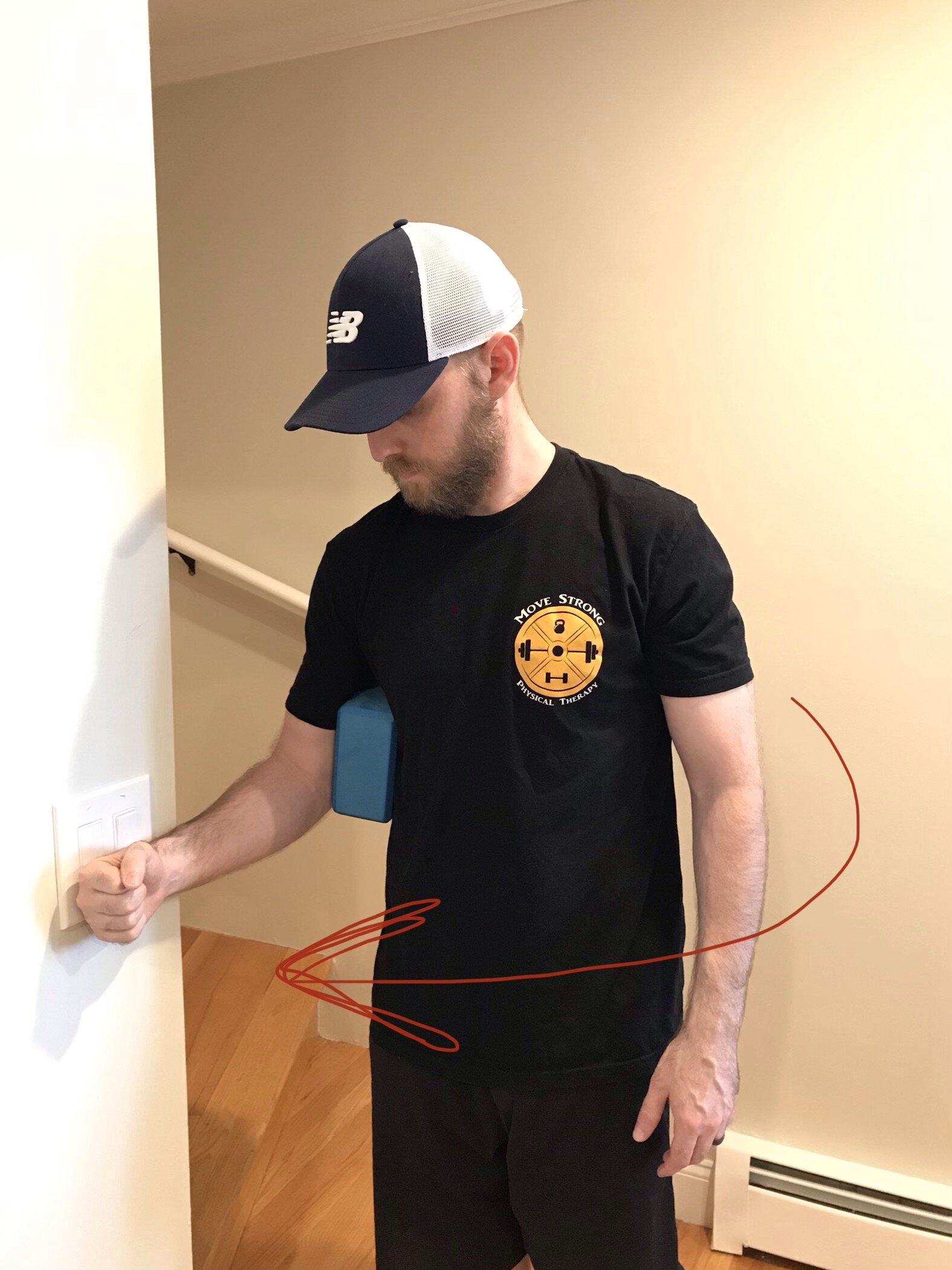
By Jared Packer
Following an injury, the most pressing question most people have about rehabbing is, “where do I start?” In general, the answer is, start just below whatever your body can handle right now. Isometrics are a great way to apply this concept.
This blog post outlines what isometric exercises are, the importance of isometric exercises for physical therapy rehabilitation programs, and a few examples of isometric exercises for shoulder and adductor muscles.
3 Types of Muscular Contraction: What Exactly is an Isometric?
An isometric is a type of muscular contraction. First, we must understand that there are three ways that a muscle can contract to create tension:

https://en.wikipedia.org/wiki/Muscle_contraction
A concentric contraction is when the muscle produces tension while shortening.
An eccentric contraction is when the muscle produces tension while lengthening.
An isometric is when a muscle contracts but does not change in length.
Why Do Injuries Happen, and How Do Isometric Exercises Help?
Performing isometric exercises will:
Provide a safe way to remodel any damaged/healing tissue
Communicate information to your brain/nervous system
At a basic level, injuries happen when a force placed on a tissue exceeds its capacity to handle it. Our tissues have different capacities depending on the position a joint is in. For example, our muscles are strongest at mid-range.
You are stronger doing a deadlift off of a rack/blocks than doing a deadlift off of the floor. Because muscles are weaker in their lengthened or shortened state, injuries often happen when a joint is working at these extreme end ranges.
While tissue is healing, its ability to handle tension is temporarily reduced. When rehabbing, it is important to produce a level of tension that is just below the tissue’s current capacity.
Performing an isometric will give you the most control on how much stress is applied to healing tissue. Your body will give you feedback about what intensity is safe or not.
Pain is one indication that you are exceeding this level (but not always, especially in regards to chronic pain. I know, this can be confusing. Consider seeing a PT if you are unsure which pain signals you’re experiencing).
Tissues need some level of stress to remodel and fully heal. Normally, the muscle fibers, ligaments, etc, run in a specific direction(s) that is most effective at resisting and/or producing forces. Stress to these tissues stimulates them to rebuild along the lines of stress.
This follows the same principle as Wolff’s Law, which explains how bone tissue is laid down along lines of stress. This is also why a part of recovery from osteoporosis is weight-bearing exercise. Apply stress to the bone (but not enough to break it), give it time to recover and adapt, and the body will make the bone stronger to directly oppose the force that was applied.
Therefore, proper stress guides the direction for optimal tissue growth. Without stress, eventually, cells will lay down a patchwork of disorganized tissue (scar tissue).
In addition, tension placed on the tissues increases communication with the nervous system.
Your muscles and joints have mechanoreceptors - cells that specialize in sensing stuff. This includes tension, pressure, temperature, vibration, etc. We will focus on the ones that sense tension. When tension activates these particular cells, they relay information to your spinal cord and brain. The brain uses this information to maintain a map of your body as it exists in space.

The nervous system receives real-time information from these mechanoreceptors, so it can continually update the maps. This is called proprioception. Injury can distort the information being sent, and inactivity will generally make matters worse. Without proper rehab, the maps can remain altered, even after the tissues have healed. This may cause the brain to limit range of motion at a previously damaged joint in the form of muscle spasm and/or pain.
Performing isometrics at the boundaries of safe range of motion is a way of sending information to your brain about the state of your joints. The closer to your end range you get, the more active your mechanoreceptors will be, and the more information will be sent.
The Benefits of Isometrics
Isometrics allow your muscle fibers to focus on using strength within your current capabilities and in a safe way. Isometrics also allow your muscle fibers to fully heal by relying on a healthy amount of stress to complete an exercise rep.
Isometrics allow you to maintain complete control without the risk of pulling or straining a muscle, which is more possible with eccentric and concentric exercises.
ISOMETRIC BASIC PARAMETERS
Start at mid-range.
Pretend that you are turning up a dial, starting your contraction at 0 and then to 10%, 20%, and so on.
Increase the intensity until you get to the point of MINIMAL symptoms, or the sense that you are at the limit of what is safe.
Hold for 5 seconds.
Repeat 5 more times.
If symptoms are worsening, you are squeezing too hard and should turn down the dial a little bit.
Start with a few sets spread throughout the day.
You can then increase based on your body’s tolerance. If you can get up to 70% intensity without symptoms, you can start to challenge the muscles at a greater length.
Types of Isometric Exercises
Virtually any exercise can be transformed into an isometric hold or isometric exercise. Any exercise that focuses on engaging your muscles into tension/contraction and holding it without much movement for a set amount of time can be considered isometric.
Examples of Isometric Exercises
ADDUCTOR ISOMETRICS
Adductor isometrics are used frequently for pelvic and groin strains. Groin strains are often an injury to an adductor muscle or tendon. To apply low stress to the muscle and tendon, we will start with the muscles around mid-range. This places more stress on the muscle belly than the tendon.
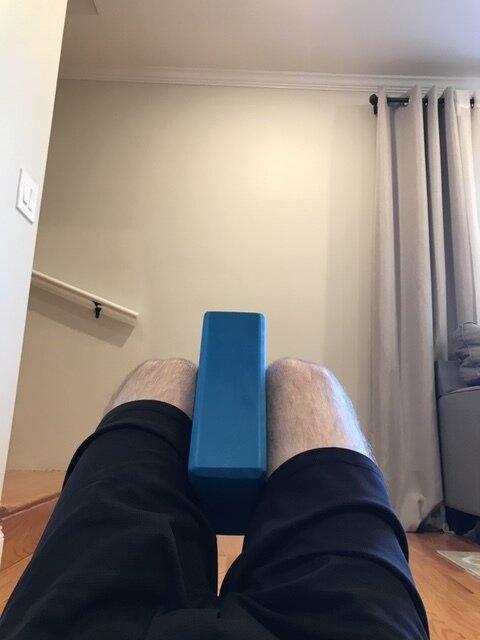
Once you can tolerate at 70% intensity, use a larger object
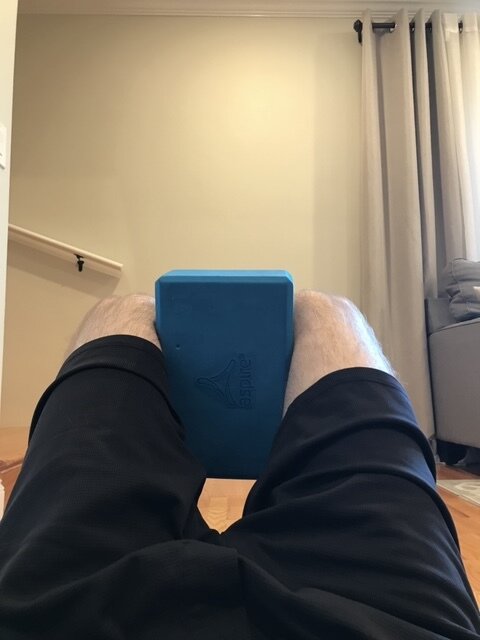
And Larger…

And eventually move on to a Physioball:
After this you can begin a copenhagen progression:
In this video, I am demonstrating concentric, isometric, and eccentric contractions. You can modify the exercise to focus on the hold on the top, using the bottom leg and top arm to help you get into the initial position.
SHOULDER ER ISOMETRICS
Here is a progression you can use with the same concepts to activate your shoulder external rotators (rotator cuff).
Side-Lying Shoulder ER
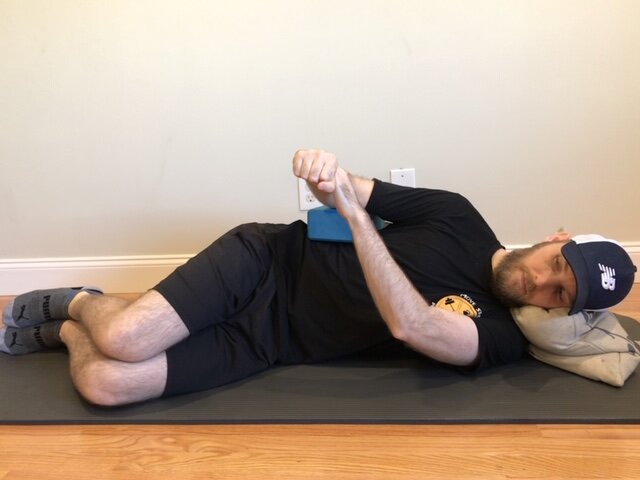
Side-Lying Shoulder ER in 15 degrees IR
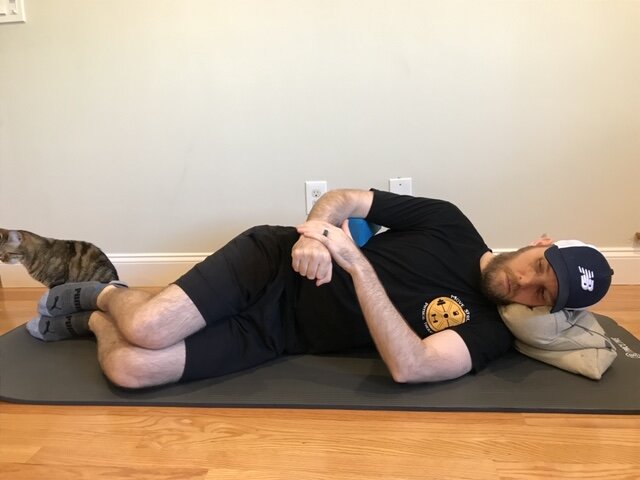
SHOULDER ER in standing
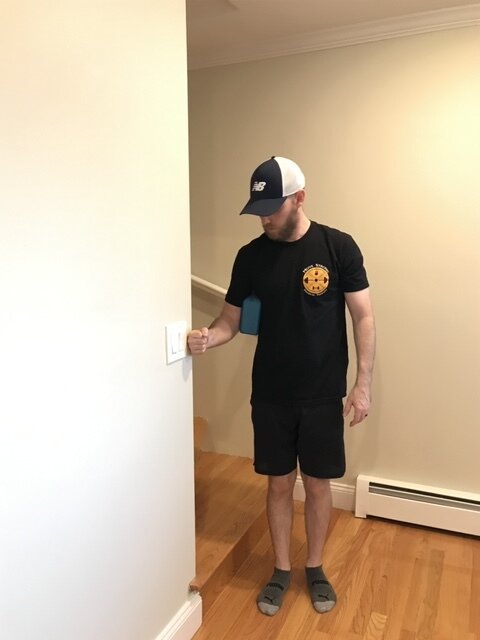
To move into the next position, rotate body inwards as shown:

Shoulder ER in 15 degrees IR:

When doing this isomeric exercise, be careful not to allow your shoulder blade to tip forward.)
Shoulder ER (45 deg) at 90 deg Abduction

Shoulder ER (90 deg) at 90 deg Abduction (shortened tissues)

Shoulder ER (0) at 90 deg ABDuction (lengthened tissues)
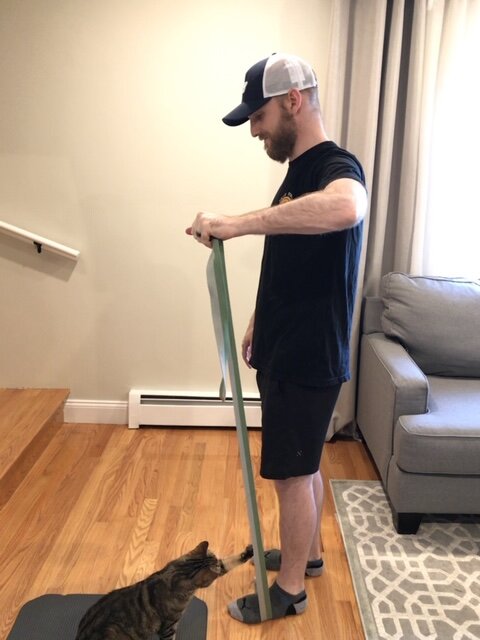%20at%2090%20deg%20ABDuction%20(lengthened%20tissues).jpeg)
(Maya making sure I am not slacking!)
In Closing: The Importance of Isometric Exercises
Isometric exercises can seem pretty boring and may not be as fun or sexy as trendy instagram exercises, but they are effective.
Once you have established that you can tolerate them well, you can move on to eccentrics, and other more complex movements. Mastering the fundamentals will give you the best chance at a successful recovery!
Of course, while recovering from an injury it is best to have the guidance of a licensed physical therapist like the ones at Move Strong Physical Therapy, located inside of Cressey Sports Performance.






